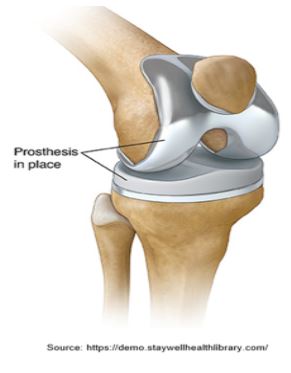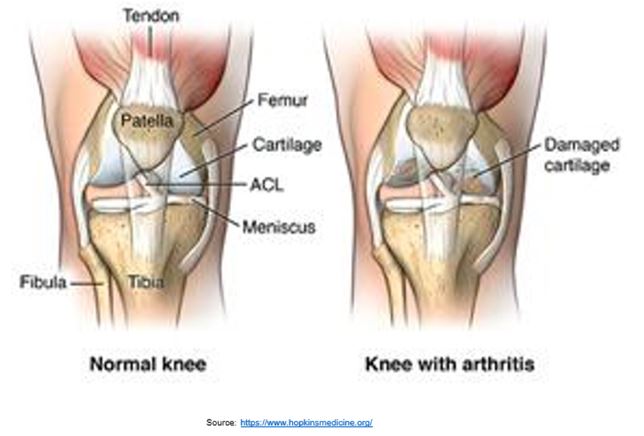Over time, our knees get damaged either due to arthritis or maybe some injury. A consultation with your orthopedic surgeon Dr. Saurabh Talekar and discussion with him will clarify all you need to know about Knee Replacement surgery.
Things People Ask Before Knee Replacement Surgery:
Over time, our knees get damaged either due to arthritis or maybe some injury. A consultation with your orthopedic surgeon Dr. Saurabh Talekar and discussion with him will clarify all you need to know about Knee Replacement surgery.
Knee replacement surgery involves replacing the damaged knee with implants. There are two types of knee replacement surgeries, partial knee replacement surgery, and total knee replacement surgery.
Partial knee replacement surgery involves replacing only the damaged portion of the knee with an implant, also called Unicondular knee replacement.
Total Knee replacement involves replacing the entire knee joint, which involves resurfacing the damaged bones with metal or plastic caps.
Dr. Saurabh Talekar, one of the best orthopedic surgeons in Kandivali, tells us about the things people need to know before deciding to undergo Knee Replacement Surgery (KRS).
Before you decide on knee replacement surgery (KRS), keep the following in mind:
When is it appropriate to have a total knee replacement performed?

- Pain or stiffness that prevents you from doing the things you want to do daily
- While resting or sleeping, there is moderate pain.
- Chronic swelling and inflammation that does not go away with rest
- Knee malformation that is clearly visible
- Other pre-operative treatments have failed.
While it has traditionally been recommended that patients wait as long as possible before having a total knee replacement, current research has revealed that doing so earlier is helpful. Younger people with less severe arthritis have demonstrated to have fewer complications and better outcomes.
Can the doctor cure us of arthritis?
Curing arthritis may or may not be possible. It entirely depends on which type of arthritis you are suffering from, says Dr. Saurabh Talekar, one of the best Orthopedic Surgeons in Kandivali.
Dr. Talekar explains that Osteoarthritis is an age-related disease and cannot be cured; however, it is manageable with the intake of calcium supplements, collagen-building supplements, and physiotherapy or light exercise.
Joint pain, however, explains Dr. Talekar is one thing that, if unbearable due to complete loss of cartilage, has to be treated with knee replacement surgery only.
Rheumatoid Arthritis, on the other hand, is reversible to a certain extent if detected early during early onset. This form of arthritis, too, may need knee replacement surgery if left untreated or undetected for many years since it becomes severely unbearable.
Does Osteoarthritis result in deformities?
Osteoarthritis is a result of cartilage damage. It can affect any joint, such as the spine, hips, knees, and/or hands. It will be evident in the way you walk if your knees are affected by arthritis. The knee joint may result in inward or outward angulation while you walk, or you may limp while walking. If the hip joint is affected, there is difficulty in the complete range of motion; then, you may notice that the entire leg starting at the hip may be out-turned or in turned and fixed in that position. These are deformities as it hampers with your life.
Is it possible to cure a torn ligament?
Ligament repair is a certain possibility depending on which ligament is damaged. If it is the ACL (anterior cruciate ligament) or PCL (posterior cruciate ligament) of the knee joint, reconstruction of the ligament is the only option; otherwise, you may end up with instability of the knee joint, explains Dr. Talekar.
How successful is the Knee replacement procedure at a Wholistic Care Centre in Kandivali?
Dr. Saurabh Talekar of Wholistic Care Centre is an orthopedic surgeon backed by his unmatched educational background and fellowships from the most reputed medical institutes in Europe.
This experience gives him an edge in carrying out the joint replacement surgeries with perfection to the patient’s complete satisfaction in terms of comfort and adaptation of the device.
He utilizes the gyroscope assistance for carrying out the surgery.
98 percent of the knee replacement surgeries carried out in India are successful, and the chances only improve with the use of this
technology.
Physiotherapy sessions follow joint replacement surgery after the wound has healed to strengthen the muscles and regain complete motion.
What is I Assist Gyroscope-Based Knee Replacement Navigation?
Dr. Saurabh Talekar of the Wholistic care center in Kandivali puts the invention of this technology to good use to ascertain the angle at which the implant needs to be placed. Gyroscopes and accelerometers are both common in aviation and smartphone technologies.
As a result, the procedure is less invasive, more predictable, and less prone to errors. This is a huge accomplishment because knee implants are expected to last far longer than traditional surgery.
WHAT CAN I DO TO MAKE MY JOINT REPLACEMENT LAST LONGER?
While implant technology has advanced significantly and implant survival rates are pretty good, implant lifetime varies from patient to patient. Some steps may be followed after surgery to assist your implant endure as long as possible, in addition to the pre-operative activities that can help you get better results. Talk to your surgeon about the following:
Pay attention to what your surgeon says.
Follow the rehab and follow-up regimens as directed.
Maintain a healthy lifestyle.
Lifting and pushing should be avoided.
Squatting, kneeling, or sitting on low surfaces for lengthy periods of time are not recommended.
Standing and sitting down should be done slowly.




